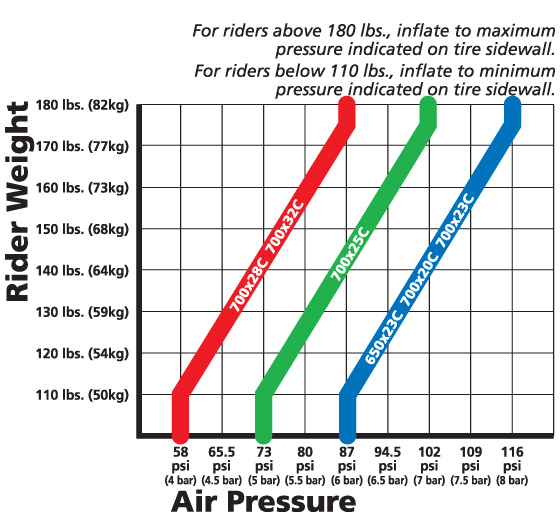Most golf cart tires will recommend a tire pressure somewhere between 15 and 25 psi (pounds per square inch) but some can reach up to 40 psi.
This puts the average tire pressure number at around 20 psi for a golf cart tire. Tires for different types of golf carts and from different manufacturers may vary from the average golf cart tire pressure. Most golf cart tires have the recommended psi imprinted somewhere on the tire’s sidewall. If you cannot find the psi on the tire for some reason, contact the manufacturer.
How to Adjust Your Golf Cart’s Tire PressureIf you are going to own a golf cart, there are some useful tools that you should consider investing in to extend the life of your cart. You should treat your golf cart tires as if they were the tires on any other motorized vehicle. Here are some tools you can store with your golf cart for easy maintenance:
Pressure gauge: The first tool you will need for keeping your golf cart tires in good condition is a pressure gauge. To use a pressure gauge you simply need to remove the cap on the air valve of your tire and quickly press the end of the gauge into the valve. You should hear a short burst of air as you are pressing the gauge onto the valve. You can then pull the gauge away from the tire and see the displayed air pressure in units of psi.
Electric air pump: A portable electric air pump is the fastest way to put air into your golf cart tires. After checking the tire pressure with your gauge, determine whether you need to add air to the tire (pressure is too low) or release air from the tire (pressure too high). To add air pressure, plug in your electric pump and locate the nozzle where the air is dispensed. Hold the nozzle over the air valve of the tire and press onto it until you cannot hear air escaping anywhere. Every couple of seconds, pull the air pump away and check the pressure with your gauge again. Repeat this process until your tires have reached the appropriate psi.
Why Does the Appropriate Tire Pressure Matter?Obviously, the appropriate tire pressure will allow your golf cart to move, but there are other reasons why you should check your tire pressure on occasion.
Prevent wearing out power systems: If your golf cart’s tire pressure is too low or high it can possibly damage the cart. Low tire pressure can cause your power systems like the battery and motor to work harder and in turn, wear out faster.
Extend the life of the tires: When tire pressure is too low, increased friction on the road can cause your tires to lose their tread sooner. When tire pressure is too high, it is possible for tires to pop, especially when abrupt force is applied to the tire. This can happen by hitting a pothole or somewhat pointed object.
Give a smoother ride: When tire pressure is too low, it can cause your golf cart to slow down due to increased friction. If your golf cart tire pressure is too high, it can reduce the ability of your tires to absorb energy causing a bouncy and uncomfortable ride.
J’s Golf CartsAt J’s golf carts we can equip a golf cart with KENDA TERRA TRAC, 20X10-8, 4 PLY tires to accommodate different kinds of terrain.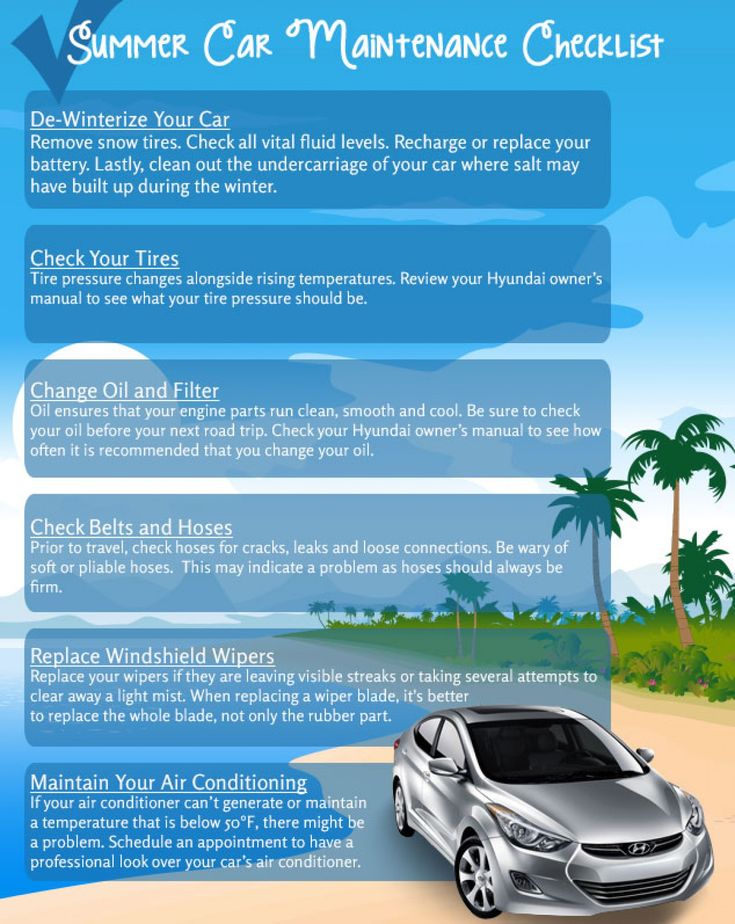 Check out our cool custom golf carts with the Kendra tires installed. With one of J’s golf carts, you can enjoy your ride on all terrains.
Check out our cool custom golf carts with the Kendra tires installed. With one of J’s golf carts, you can enjoy your ride on all terrains.
When it comes to the maintenance of your golf cart, golf cart tire pressure is one of the most important metrics to keep an eye on. In general, you want to maintain a tire pressure of between 15 to 25 PSI (1.03 to 1.72 bar) in order to keep your tires functioning and to extend their lives.
As variations in climate can change the effective pressure within your golf cart tires even after filling them to a specific pressure, we recommend filling golf cart tires to a value in the middle of the accepted range: 20 to 22 PSI (1.38 to 1.52 bar).
If you allow your golf cart tire pressure to drop too low it can significantly increase the wear on your tires. Poorly pressurized tires also lose more energy to friction, so your cart's battery and motor will wear down faster as well.
On the other hand, you can't just fill your golf tires to the highest pressure possible. A tire pressure that is too high will reduce the traction and shock resistance of your golf cart tires, resulting in an uncomfortable and jostling ride. In addition, overfilling your tires can cause them to explode under the wrong circumstances.
Your choice of golf cart tire is dependent mostly on your intended application for your cart as well as the size. If you plan to use the cart primarily on golf courses, Turf (aka Street) tires are optimal, as their mild tread is well-suited for smooth pavement. If you plan to use the cart for more industrial or off-road applications, Knobby (aka Off-Road) tires are preferable, as they are more durable in rough terrain. However, as Knobby tires wear much more quickly on pavement, it is important to purchase them only if you intend to make use of their advantages.
Once you have chosen the proper tire for your golf cart, (if you haven't read our guide on how to read golf cart tire sizes we recommend you check it out), you can find the ideal tire pressure on the outside edge of the tires.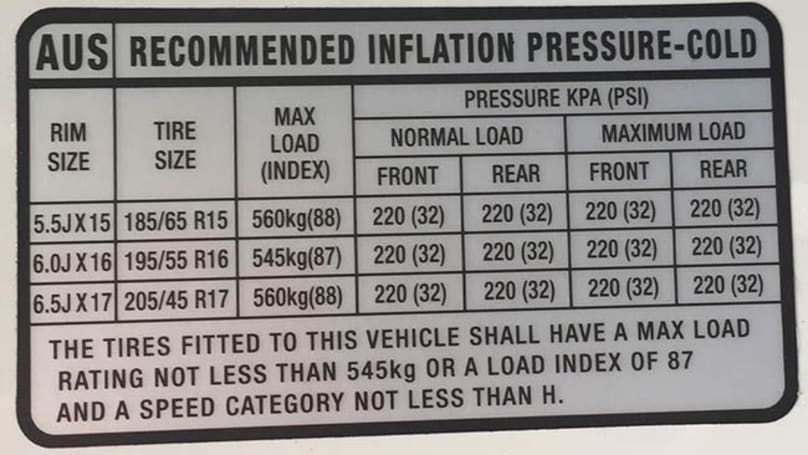 Your golf cart manual should also carry recommended inflation values for each potential type of tire.
Your golf cart manual should also carry recommended inflation values for each potential type of tire.
Standard golf cart tires will usually have a diameter of 8 to 10 inches, while larger golf cart tires can be as wide as 12 inches in diameter. Larger golf cart tires can often require modified golf cart wheel wells to install, so make sure to check what is required for your golf cart's model.
Similar to in your car, the golf cart tires should be rotated frequently in order to maximize their useful life. While uneven tread wear on car tires is often caused by variable turn radii for left and right-hand turns, uneven tread wear on golf cart tires can also be attributed to an uneven weight distribution between the forward and rear ends of the cart.
Once you have exhausted the useful life on your golf cart tires you should replace them with new tires. Contrary to popular belief, mildly used golf cart tires are not the superior option for retrofitting your golf cart.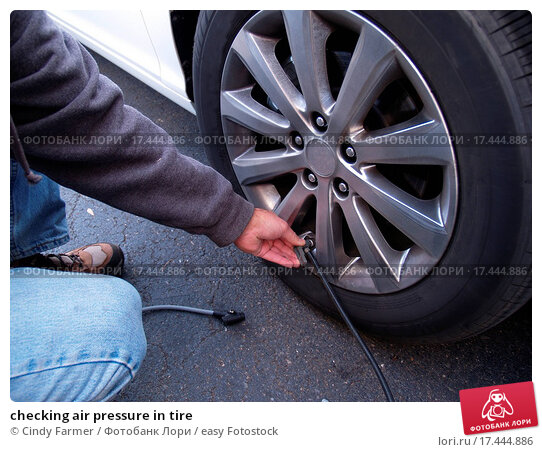 The benefits of longer life and a performance warranty mean that buying new golf cart tires and wheels is usually the preferred option for golf carts.
The benefits of longer life and a performance warranty mean that buying new golf cart tires and wheels is usually the preferred option for golf carts.
Being sure to drive safely and conscientiously—a flat tire can be an expensive accident. Carrying a quick patch kit or aerosol spray tire sealant are excellent ways to ensure that you don't have to call immediately for a repair company if your golf cart does get a flat tire. For another great guide check out our ultimate golf cart tire FAQ sheet.
Looking for more tire info? Check out our guide to choosing tires for your golf cart.
08 02 2022
Sufficiently inflated tires ensure the safety and comfort of our trips, so it is recommended to check the pressure at least once a month.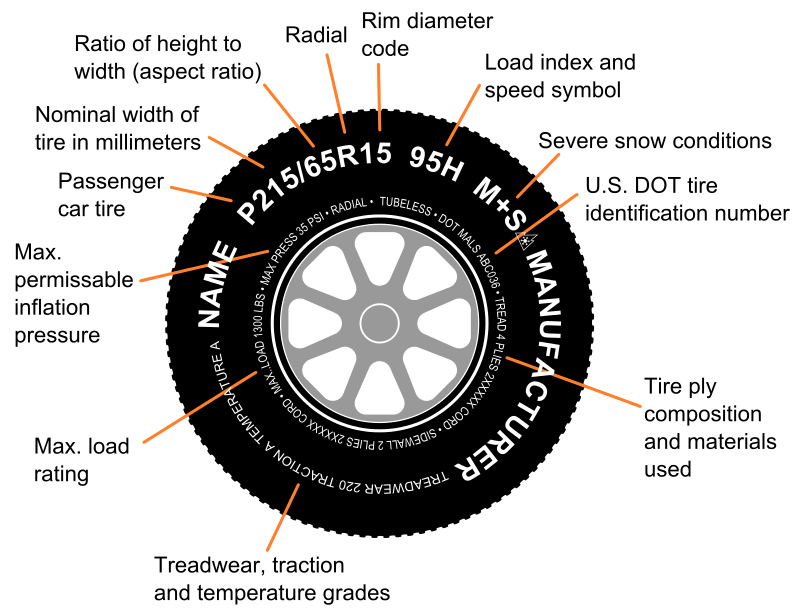 If it is neither too high nor too low, the tires will wear evenly, provide the best traction, and last as long as possible. Today we will tell you what pressure should be in the tires and explain how to pump them up. nine0003
If it is neither too high nor too low, the tires will wear evenly, provide the best traction, and last as long as possible. Today we will tell you what pressure should be in the tires and explain how to pump them up. nine0003
The most common and obvious causes of flat tires are mechanical damage, punctures or cracks in the wheel rim . Such problems can arise even with very high-quality tires, but if you are going to buy new ones, we have prepared tips for you on which tires to choose.
However, a slight decrease in air pressure does not always indicate a serious problem. Sometimes this is due to temperature fluctuations, and sometimes this is due to small particles of oxygen penetrating into the gaps of the rubber. At the same time, changes are not noticeable for a very long period of time. That is why, to avoid more serious problems, it is important to check pressure changes regularly. nine0003
The damage caused by poorly inflated (or even completely flat) tires is often talked about - increased fuel consumption, faster lip wear, stress and damage to the side structure, risk of rim damage . .. No less problems can arise and in the event that you overdo it: traction will deteriorate, rides will not be as comfortable, the center of the tires and the suspension will wear out faster. nine0003
.. No less problems can arise and in the event that you overdo it: traction will deteriorate, rides will not be as comfortable, the center of the tires and the suspension will wear out faster. nine0003
The most suitable pressure depends on the vehicle. If you look in the owner's manual or on the inside of the driver's door, you will find a table with all the most important data. Sometimes it can also be on the threshold or on the fuel tank door. In this case, it is important to pay attention to the units of measurement - pressure can be indicated not only in atmospheres, but also in bars. In this case, before inflating the tires, it will be necessary to convert the corresponding number. nine0003
It is also important to note that the most accurate readings will be obtained when the tires are cold, close to air temperature. That is why it is recommended not to measure tires immediately after long journeys and to buy a pressure gauge on your own, rather than go to a gas station. This device is often integrated into a tire inflation pump.
This device is often integrated into a tire inflation pump.
Once you have determined the correct air pressure for your tires, all you have to do is inflate them. This procedure is usually performed at a gas station, but you can apply it elsewhere using the instructions below:
 Then you will not have to do anything else on your own: the device will inflate the tire to the required pressure and notify you of the completion of work with a sound signal.
Then you will not have to do anything else on your own: the device will inflate the tire to the required pressure and notify you of the completion of work with a sound signal. By taking all of the above information into account and regularly checking the air pressure in the tires, you can be sure that all your trips will be safe and as comfortable as possible. These works will not require much of your time, but the differences will be obvious. nine0003
6 Customer Ratings
Correct tire pressure Volkswagen Golf is the key to safe driving and maintaining optimal driving comfort. The company sets strict requirements for the degree of inflation of cylinders, which does not prevent numerous drivers from adjusting the indicators for themselves. Strongly deviate from the recommended pumping should not be - this can adversely affect the control and comfort of the car. nine0078
nine0078
Content
The most common tire on the market, the manufacturer recommends inflating to 2.0 Kg/cm for all four wheels. If you plan to use the car in full load mode, increase the pumping to 2.3 / 2.8 atm on the front and rear.
Keep in mind that with the advent of cold weather, the pressure in the cylinders will drop by about 0.2-0.3 bar. The indicator needs to be monitored in a timely manner.
For skates of increased diameter, the pumping should not be increased. The same recommendations apply here as for R15 tyres.
On the second generation of cars, rollers of R13 and R14 sizes were mainly installed. If the driver has not changed the equipment, the pressure here should be kept at 1.9-2.0 Kg / cm.
When a full load is required, drivers prefer to increase the inflation to 2.5-2.6 atm. This compensates for the increased pressure of the cylinder under the weight of the car. Consider road conditions. For primers or heavily worn asphalt surfaces, experienced drivers advise, on the contrary, to reduce pumping. So it will turn out to slightly level the bumps and increase the comfort of movement. nine0003
The third generation hatchback differs little from its predecessor. R15 tires appeared here, but the manufacturer chose not to increase their recommended boost. This is argued by the correct refinement of the suspension, which allows you to maintain comfort and dynamics without pumping rubber. The optimal mark will be - 1.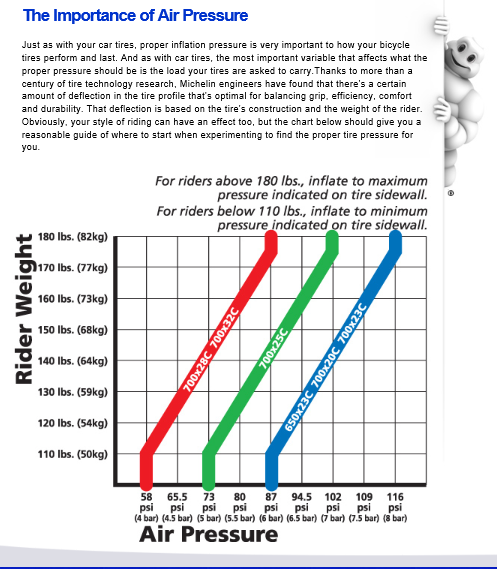 9-2.0 atm.
9-2.0 atm.
On the fourth generation, the weight distribution system has changed slightly. Here, R15 / 16 type wheels should be pumped up to 2.2 / 2.4 atm. Station wagon and / or at full load, 2.4 / 2.9 is considered optimalBAR.
In R16 and 17 rubber, the manufacturer recommends maintaining a parameter of 2.2 Kg/cm in a circle. The pressure reduction trick won't work here. A TPMS system is installed on board, which monitors the condition of each wheel. If the parameter falls significantly below the initial value, the bookmaker will issue an error.
Also for R15/R16 tires from the sixth generation, it is recommended to keep the inflation at around 2.2 bar all around. nine0019 It is noteworthy that in the GTI version, in racing mode, the inflation rate should be raised to 2.6 Kg/cm.
All identical with the 7 version of the popular model.